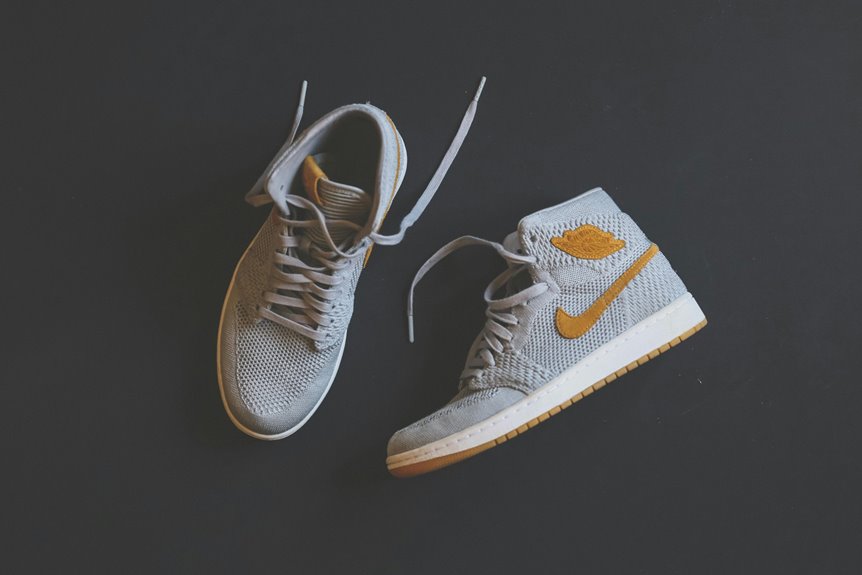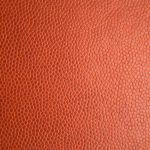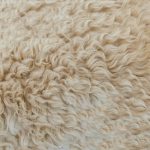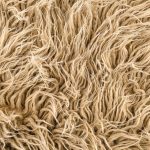You’ll love bouclé fabric for its unique looped texture that feels soft and cozy while adding visual interest to your wardrobe or home. It’s made from twisted yarns creating those signature nubby loops, offering warmth, durability, and wrinkle resistance. Popular in fashion and interior design, bouclé effortlessly combines style with comfort and timeless appeal. Keep exploring, and you’ll discover how this fabric enhances both your outfits and living spaces.
Table of Contents
Key Takeaways
- Bouclé fabric features a unique looped texture creating a soft, cozy, and visually interesting surface.
- It is made from wool, cotton, or synthetic yarns, offering warmth, durability, and natural insulation.
- Bouclé resists wrinkles and maintains its texture, making it low-maintenance and ideal for outerwear and accessories.
- Its rich texture adds depth and elegance, favored by designers for timeless fashion and stylish interior decor.
- Bouclé’s production involves special looped yarn techniques, giving it a distinctive nubby feel and versatile applications.
What Defines Bouclé Fabric?
Bouclé fabric stands out because of its unique looped texture, which gives it a distinctive, bumpy surface. When you touch bouclé, you immediately notice the uneven loops, created by weaving or knitting yarns with varying thicknesses.
These loops aren’t tightly woven, so the fabric feels soft, cozy, and slightly textured. You’ll find bouclé made from a mix of fibers like wool, cotton, or synthetic blends, which adds durability and comfort.
Its structure allows the fabric to drape well while maintaining a rich, tactile appearance. Whether you’re choosing bouclé for clothing or upholstery, you’re picking a material that combines visual interest with a pleasant feel.
This texture defines bouclé and makes it instantly recognizable and versatile.
The History and Origins of Bouclé
You’ll find that bouclé’s unique texture comes from early textile innovations that shaped its creation.
Its roots trace back to specific cultures that valued both durability and style.
Understanding these origins helps you appreciate bouclé beyond its look.
Early Textile Innovations
Although textile techniques have evolved over thousands of years, early artisans laid the groundwork for innovative fabrics by experimenting with yarn structures and weaving methods.
You can trace bouclé’s origins to these pioneers who played with looped yarns and textured threads. By twisting and looping fibers, they created fabrics with unique surfaces that weren’t just flat or smooth.
These early innovations allowed for tactile, visually interesting textiles that stood out from traditional weaves. As you explore bouclé, it’s clear that this fabric’s distinctive look stems from those foundational experiments.
Understanding these early techniques helps you appreciate how bouclé’s signature loops and curls came to be, marking a key step in textile history toward more complex and decorative materials.
Bouclé’s Cultural Roots
The unique looped texture that early artisans developed found a special place in various cultures, each adding its own flair and meaning to the fabric.
When you explore bouclé’s roots, you’ll see how this fabric evolved and influenced fashion worldwide. Here’s what you should know:
- Originating in France, bouclé became a symbol of elegance in haute couture.
- In Scotland, artisans used similar looped yarns for warmth and durability in traditional garments.
- Japanese weavers adapted bouclé techniques for intricate kimono fabrics, emphasizing texture.
- The 20th century saw bouclé embraced by designers like Chanel, cementing its place in luxury fashion.
Understanding these cultural influences helps you appreciate why bouclé remains a timeless and versatile fabric choice.
How Bouclé Fabric Is Made
Since bouclé fabric’s distinctive texture comes from its unique yarn, understanding how it’s made helps you appreciate its charm.
You start by creating a special yarn with loops along its length. This involves twisting together at least two strands of yarn, where one strand is kept loose to form those characteristic loops.
When woven or knitted, these looped yarns produce the fabric’s signature nubby, textured surface. The process requires careful control of tension to guarantee loops form consistently.
After weaving, the fabric may be washed and finished to enhance softness and durability.
Different Types of Bouclé Yarn
When choosing bouclé yarn, you’ll find options like wool, cotton, and synthetic fibers, each offering unique textures and durability.
Wool bouclé yarn provides warmth and softness, while cotton is breathable and lightweight.
Synthetic bouclé yarn offers added strength and easy care, making it a versatile choice for various projects.
Wool Bouclé Yarn
Although bouclé yarn comes in various fibers, wool bouclé stands out for its warmth and texture. When you choose wool bouclé yarn, you get a cozy, resilient fabric that’s perfect for colder seasons.
Here’s why you might want to reflect on wool bouclé:
- Insulation – Wool fibers trap heat effectively, keeping you warm without bulk.
- Durability – The natural elasticity of wool helps bouclé maintain its shape and resist wear.
- Texture – Wool bouclé’s characteristic loops add a tactile, inviting surface.
- Moisture-wicking – Wool naturally draws moisture away, enhancing comfort.
Cotton Bouclé Yarn
Wool bouclé offers warmth and durability, but cotton bouclé brings a different set of qualities to the table. When you choose cotton bouclé, you get breathability, softness, and natural moisture absorption, making it perfect for warmer climates or sensitive skin.
Here’s a quick look at cotton bouclé yarn types:
| Yarn Type | Characteristics |
|---|---|
| Combed Cotton | Smooth, strong, and less prone to pilling |
| Organic Cotton | Eco-friendly, soft, and chemical-free |
| Blended Cotton | Mixed with other fibers for added texture |
| Mercerized Cotton | Lustrous, stronger, and more absorbent |
You’ll find cotton bouclé ideal for lightweight garments and home textiles, offering comfort without sacrificing bouclé’s unique texture.
Synthetic Bouclé Yarn
Synthetic bouclé yarn offers versatility and durability that natural fibers often can’t match. When you choose synthetic bouclé, you tap into materials like polyester, nylon, acrylic, and rayon, each bringing unique benefits to your fabric.
Here’s why you might prefer synthetic bouclé yarn:
- Durability: It resists wear, tear, and fading, making your fabric last longer.
- Moisture Resistance: Synthetic fibers dry quickly and resist mildew.
- Color Retention: Colors stay vibrant even after multiple washes.
- Cost-Effective: It’s often more affordable than natural fibers without sacrificing style.
Using synthetic bouclé yarn guarantees your fabric stays beautiful and functional, whether for upholstery, fashion, or accessories.
You get the bouclé look with enhanced performance.
Key Characteristics of Bouclé Fabric
When you touch bouclé fabric, you’ll notice its distinctive looped texture that sets it apart from other textiles. Those loops—created by varying yarn tensions—give bouclé a unique, nubby surface that feels soft yet substantial.
Bouclé’s signature looped texture offers a soft, nubby feel that’s truly one of a kind.
You’ll find it lightweight but durable, thanks to the yarn’s twist and the fabric’s tight weave. Its uneven texture traps air, providing natural insulation, so it feels cozy without being heavy.
Bouclé is also known for its dimensional appearance, offering subtle visual interest through its irregular loops and curls. Plus, it resists wrinkles well, making it low-maintenance.
Whether made from wool, cotton, or synthetics, bouclé remains breathable and flexible, adapting easily to different climates and uses. These key characteristics make bouclé both practical and stylish.
Popular Uses of Bouclé in Fashion
You’ll often spot bouclé in stylish outerwear, adding texture and warmth to coats and jackets.
It’s also a favorite for accessories like scarves and handbags, giving them a unique, cozy feel.
Let’s explore how bouclé’s distinctive look makes it a go-to choice in fashion.
Bouclé in Outerwear
Bouclé fabric has become a staple in outerwear thanks to its unique texture and cozy warmth. When you choose bouclé for your jackets or coats, you get more than just style—you get comfort and durability.
Here’s why bouclé outerwear stands out:
- Texture and Visual Interest: The looped yarns create a rich, tactile surface that elevates any outfit.
- Warmth: Its thick, nubby construction traps heat, keeping you cozy in colder weather.
- Lightweight Insulation: Despite its warmth, bouclé remains surprisingly light, so you won’t feel weighed down.
- Versatility: Bouclé outerwear pairs well with both casual and formal looks, making it a wardrobe essential.
Bouclé for Accessories
Outerwear isn’t the only place where bouclé shines—its textured, cozy appeal makes it a favorite for accessories too. When you add a bouclé scarf or hat to your outfit, you instantly boost warmth and style.
The fabric’s unique loops give accessories a tactile, inviting look that stands out without being flashy. You’ll also find bouclé used in handbags and clutches, where its texture adds depth and a designer feel.
Plus, bouclé gloves and mittens offer both comfort and a chic edge during colder months. Whether you’re dressing up or going casual, incorporating bouclé accessories lets you enjoy the fabric’s luxurious warmth and distinctive texture in small, stylish doses.
It’s an easy way to elevate your look with timeless appeal.
Bouclé in Interior Design and Home Decor
When you incorporate bouclé into your interior design, you instantly add texture and warmth to any room. This fabric’s unique looped weave creates a cozy, inviting atmosphere while maintaining a sophisticated look.
Incorporating bouclé adds instant texture, warmth, and a cozy yet sophisticated vibe to any room.
You can enhance your space by:
- Upholstering chairs and sofas with bouclé for a tactile, stylish statement.
- Adding bouclé throw pillows to soften your seating areas.
- Using bouclé blankets or throws to introduce a layered, comfy vibe.
- Incorporating bouclé-covered ottomans or benches as accent pieces.
Bouclé’s versatility fits both modern and classic interiors, making it a go-to choice for elevating your home decor.
It’s durable enough for everyday use but adds a luxurious feel that instantly upgrades your living space.
Caring for and Maintaining Bouclé Fabric
To keep your bouclé pieces looking their best, you’ll want to handle them with care and attention. Avoid machine washing; instead, spot clean with a mild detergent and cold water to preserve the fabric’s texture.
When dealing with stains, act quickly and gently dab rather than rub. For larger items like upholstery, consider professional cleaning to maintain the loops and prevent damage.
Avoid direct sunlight exposure to prevent fading, and rotate cushions regularly to guarantee even wear. Use a soft brush to lift the fibers and maintain bouclé’s characteristic nubby appearance.
Finally, store bouclé garments in breathable covers to prevent crushing and keep their shape intact. With proper care, your bouclé fabric will stay stylish and durable for years.
Why Designers Love Working With Bouclé
Although bouclé’s unique texture might seem challenging at first, designers love working with it because it adds depth and character to any piece.
Bouclé’s distinctive texture enriches designs with depth and character, making it a favorite among designers.
When you use bouclé, you get:
- Visual interest: Its looped yarns create a distinct, tactile surface that stands out.
- Versatility: Bouclé works well in various designs—from structured jackets to cozy throws.
- Durability: The fabric’s construction holds up under wear, making it practical for both fashion and home décor.
- Timeless appeal: Bouclé carries a classic yet modern vibe, letting you create pieces that never go out of style.
Tips for Styling and Incorporating Bouclé Pieces
Designers aren’t the only ones who benefit from bouclé’s charm—you can easily bring its textured elegance into your wardrobe or living space.
When styling bouclé clothing, balance its bulky texture with sleek, fitted pieces to avoid looking overwhelmed. Pair a bouclé jacket with slim jeans or tailored trousers for a chic, modern vibe. Don’t shy away from mixing textures; bouclé complements smooth fabrics like silk or leather beautifully.
At home, add bouclé cushions or throws to soften your decor and introduce warmth. Keep your color palette simple to let bouclé’s unique texture stand out.
Whether you choose a cozy bouclé coat or a plush sofa, this fabric effortlessly elevates your style with its timeless appeal and tactile richness.
Frequently Asked Questions
Is Bouclé Fabric Suitable for Allergy Sufferers?
You might find bouclé fabric challenging if you have allergies, as its textured loops can trap dust and allergens. Regular cleaning helps, but if you’re sensitive, choosing smoother, hypoallergenic fabrics might be better for you.
Can Bouclé Be Used for Outdoor Furniture Upholstery?
Using bouclé for outdoor furniture is like bringing a cozy sweater to a rainstorm—it’s not ideal. You shouldn’t use bouclé outdoors because it absorbs moisture and can wear out quickly in harsh weather conditions.
How Does Bouclé Fabric Perform in Extreme Weather Conditions?
You shouldn’t rely on bouclé fabric in extreme weather since it’s sensitive to moisture and sunlight. It can deteriorate quickly, losing texture and strength, so it’s best to use it indoors or in controlled environments.
Are There Eco-Friendly Bouclé Fabric Options Available?
Looking for eco-friendly bouclé? You’re in luck! You can find bouclé made from recycled fibers or organic cotton blends. These options let you enjoy bouclé’s charm while caring for the planet—win-win, right?
What Are Common Misconceptions About Bouclé Fabric?
You might think bouclé is itchy or hard to maintain, but it’s actually soft and durable. Don’t believe it’s only for winter; you can wear it year-round. Also, it’s easier to clean than you’d expect.
- What Temperature Is Needed to Thermoform Nonwoven Polyester? - July 11, 2025
- How to Connect Rolls of Nonwoven Geotextile End-to-End - July 11, 2025
- The Pros and Cons of Nonwoven Polypropylene Bags - July 11, 2025







